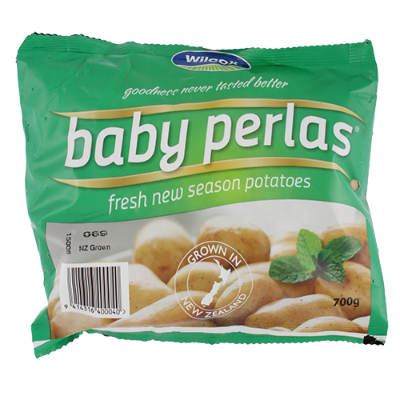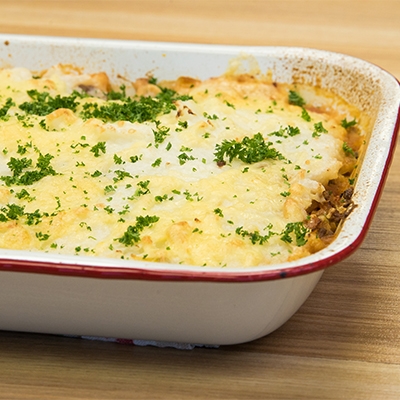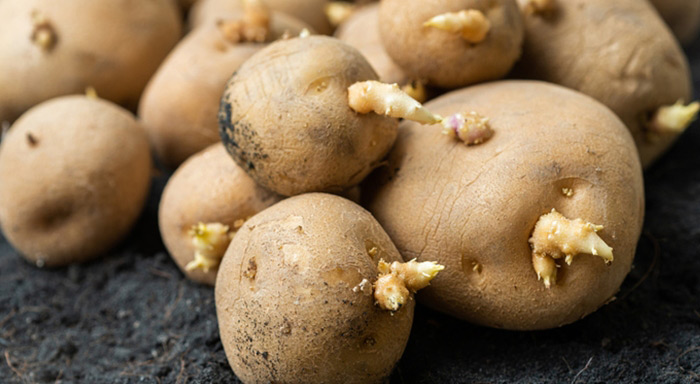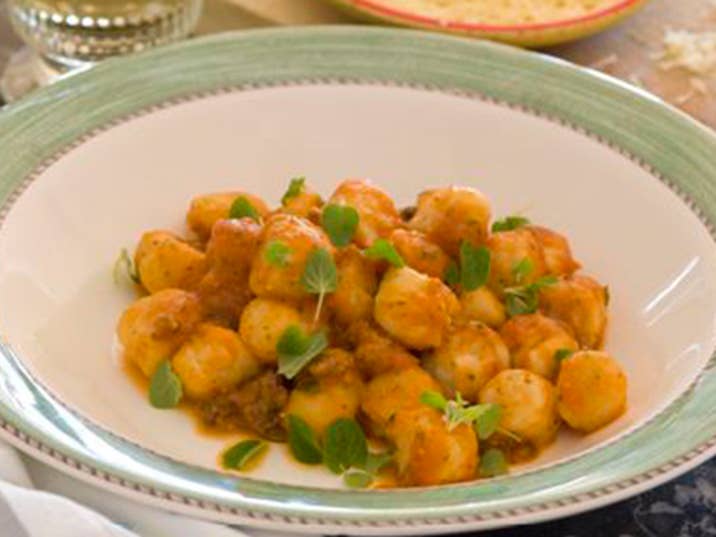Popular Types of Potatoes & how to Cook Them
Potatoes
Popular varieties of potatoes, ways to cook and tips for buying and storing potatoes.
Types of potatoes and how to cook them
Potatoes are a root vegetable and member of the nightshade family, their starchy tuber is grown beneath the soil and harvested once mature.
There are roughly 5,000 different varieties of potato worldwide. There are about a dozen common varieties of potato in New Zealand together with some local specialties. Potatoes are classified by their texture which determines their use in the kitchen.
According to 5+ a Day "53% of New Zealanders now consume potatoes four times a week". To satisfy demand, potatoes are available to buy throughout the year, with new season potatoes available from August to February.
Here are the most common varieties available and how you can get the most out of them in the kitchen.
Waxy and smooth potatoes
Waxy potatoes have a high water, low starch content and hold their shape well when cooked. Waxy potatoes are ideal for boiling, salads and casseroles.

Floury and fluffy potatoes
Floury potatoes have a low water, high starch content and tend to break up when boiled. Floury potatoes are perfect for roasting, baking, mashing and fries (hot chips).

Popular types
AgriaIlam Hardy Fianna Red Rascal
All purpose potatoes
All purpose potatoes have a moderate starch content and sit between waxy and floury varieties. All purpose potatoes can be cooked by most methods.
Popular types
RuaKaraka Vivaldi Gold Moonlight Frisia
New season potatoes
New season potatoes have a high water, low starch content. They have a firm texture so are particularly good for boiling and eating in salads.

Popular types
Yellow potatoes vs. white
Yellow potatoes tend to be creamier and have a more buttery flavour. Whereas white potatoes will have a firmer, smoother texture and a more neutral flavour.
Examples of yellow potatoes: Agria, Yukon Gold, Nadine Gold
Examples of white potatoes: Moonlight, Karaka, Rua

Buying potatoes
When you buy potatoes, look for a variety best suited to the dish you are planning to make. This will normally be identified on the product packaging or shelf labelling in store. Look for potatoes that have a firm texture, that are free from cuts, bruises, green patches and sprouting. If the contents of a new bag of potatoes are green, these should be returned to the retailer, as they have been exposed to excessive light during storage. If you plan to peel them, select a smoother, more even shaped potato, otherwise there is no nutritional difference between these and misshapen potatoes.
Storage and handling
Potatoes should be stored in a cool, dark, well ventilated place, ideally in a paper bag or cardboard box. Potatoes exposed to warm temperatures may begin sprouting in an attempt to grow. Sprouts should always be cut away before cooking. Whilst stored, avoid exposure to light, as this can cause a toxin called solanine to develop, which can taste bitter and turn the potatoes green. These green patches should be cut away before cooking.

Should you keep potatoes in the refrigerator?
Refrigerating potatoes is not recommended as this can affect the flavour. Cold temperatures can convert a raw potato's starch to sugar, making it overly sweet and causing it to deteriorate prematurely. Potatoes can be frozen to extend their storage life but are best par-boiled or blanched for 10 minutes in a pan of boiling water before freezing. Uncooked potatoes should not be frozen.
Preparing and cooking potatoes
Bagged potatoes will often state that they have been washed. Those that don't and loose- bought potatoes need to be scrubbed or washed before cooking, to remove traces of soil. Don't wash potatoes until you're ready to cook them, as damp potatoes can spoil whilst being stored. You don’t need to peel potatoes unless you really want to!
Fresh potatoes are a staple food and can be cooked in many different ways, adding endless variety to family meals. Kiwis enjoy eating them as French fries, baked potatoes, mashed potatoes, boiled potatoes, potato chips and crispy roast potatoes. If you want to be a little bit more adventurous, you could make:
- Potato rosti
- Potato salad
- Leek and potato soup
- Potato gratin
- Bombay potatoes
- Colcannon
Enjoy these potato recipes
Potatoes are available all year round and you can enjoy their health benefits by incorporating them into your diet regularly. Here are our favourite potato recipes to try at home.
Potato nutrition and health benefits
The nutritional content of potatoes vary marginally across varieties, so we focus here on the typical nutrients found in kiwi spuds.
- Natural energy for the body: Potatoes are nutrient-dense and packed with more energy than any other popular vegetable. They are simple carbohydrates and provide essential fuel to sustain the body, especially when eaten at night.
- Good source of fibre: Fibre is essential to the process of digestion and can help the body feel satisfied for longer, so you aren't tempted to snack between meals. Leaving the skins on potatoes boosts the fibre content even more.
- High water content: A raw potato is typically 79% water, 17% carbohydrate and 2% protein. Potatoes are rarely eaten raw because raw potato starch is poorly digested by humans. Carbohydrates are released once a potato is cooked.
- Minimal fat and sodium: Potatoes aren't fattening - they're almost fat-free, cholesterol-free and sodium-free and can be enjoyed as part of a balanced diet. Care needs to be taken when selecting the ingredients to eat with the potato. Butter, oil and animal fats enhance the flavour of potatoes but they are also very high in fat content. Consider replacing these with low fat alternatives.
- 30% of your daily vitamin C requirements: Potatoes are an excellent source of vitamin C, especially if the skin is also consumed. Just one serve can provide 30-40% of your body's recommended daily vitamin C requirements. It's a vital nutrient to maintain a healthy immune system and tissue repair.
- Valuable source of B vitamins: The B group vitamins help prevent infections, support red blood cell health and energy release from food. Potatoes are a valuable source of B6, folate, thiamin, pantothenic acid and niacin.
- Good source of antioxidants: Potato varieties with red skins and yellow flesh contain higher levels of antioxidants which may reduce the risk of heart disease, diabetes and certain cancers.
- Rich source of Iron, magnesium and potassium: Potatoes have more potassium than bananas which may benefit heart health and lower blood pressure. They are also a rich source of iron and magnesium, required for human health.
Read more Fruit and Vegetable guides
Pumpkin | Kumara | Silverbeet | Asparagus | Watermelon | Afourer Mandarin | Cherry Tomato | Mushrooms | Avocado | Grapefruit | Broccoli | Celery | Potatoes | Oranges | Strawberries





